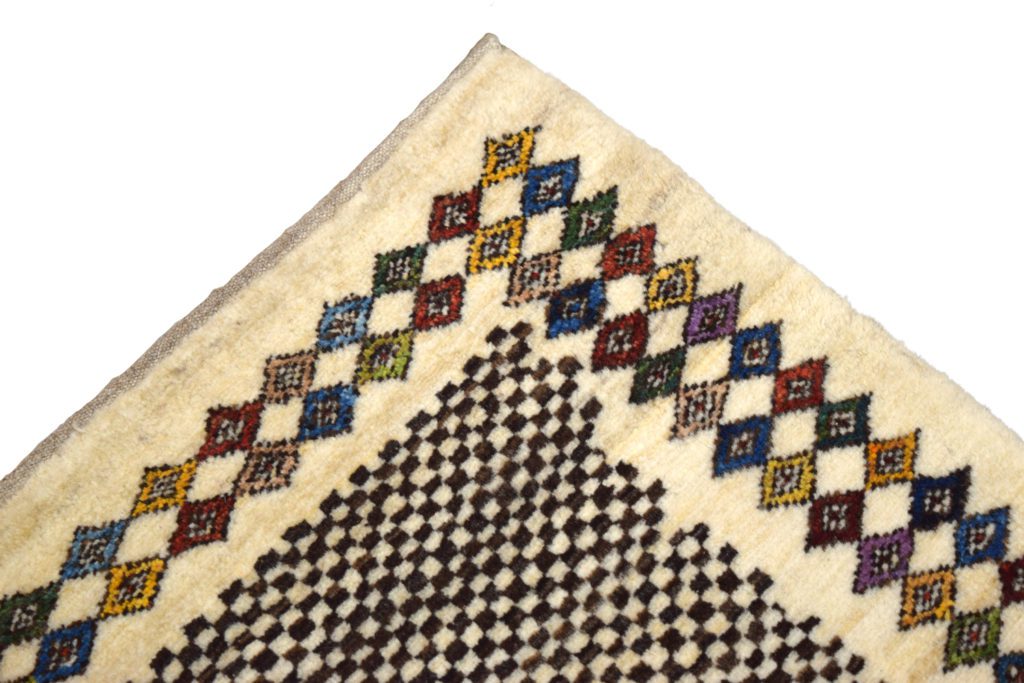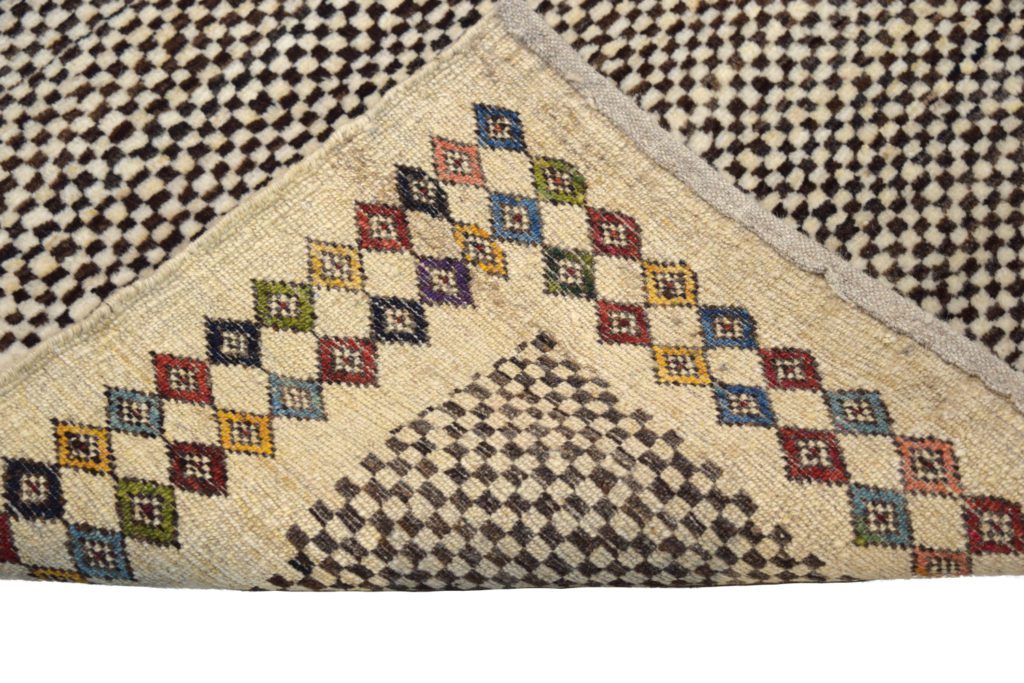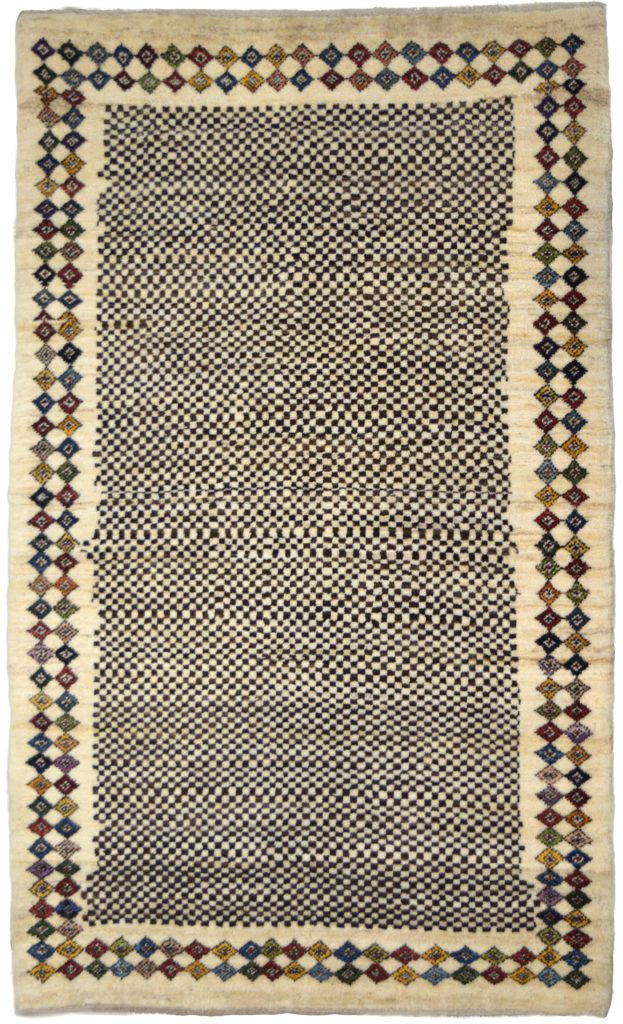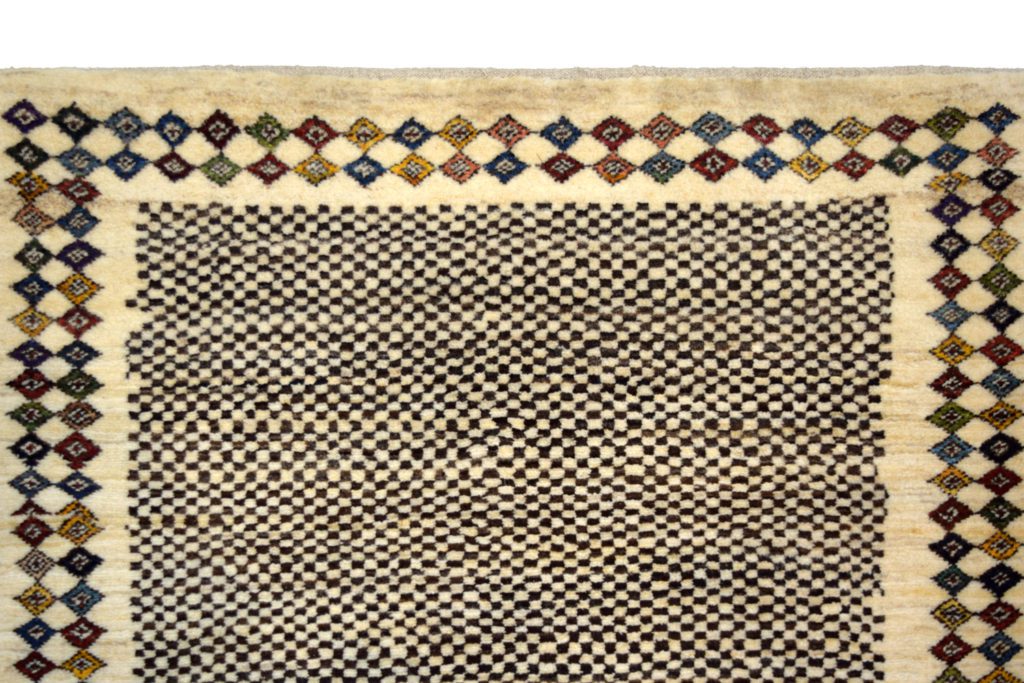Staff Pick – Vintage Gabbeh Carpet
World-renowned for our modern and contemporary carpet collections, all too often, the smaller and more tribal-styled carpets go unnoticed. In this week’s Staff Pick, we will discuss a smaller vintage Gabbeh carpet and re-discover more about the Gabbeh tribe, the carpet’s construction, and the overall carpet design.
Located in the southwestern portion of Iran, the Fars province resides within the most central of the five regions in Iran. Throughout history, Fars has experienced firsthand the influences of rulers, such as Karim Khan Zand and iconic Iranian poets Saadi and Hafiz. And within this region of present-day Iran, multiple nomadic tribes, such as Kashgar, Behbehan, Abadeh, Yalame, Niriz, and Gabbeh, have settled in the area. Due to its elevation of 4,900 feet, this region of Iran experiences warm summers and mild winters, making it extraordinarily hospitable.
Gabbeh refers to a carpet of recent production, hand-knotted by either the Khashghai or Behbehan tribes, usually with natural undyed wool. Weavers utilized traditional Persian weaving techniques in the fabrication of this carpet. Wool, shorn from Persian fat-tailed sheep, was hand-spun into cream white yarn. Weavers hand-spin wool for several reasons. First, machines that spin wool are too abrasive and strip the fibers of their natural lanolin. Hand-spinning the yarn locks in the lanolin within the woolen fibers, but most important to the aesthetics of the final result, it creates the intricate and sought-after abrash in the texture of the carpet. After the spinning, dye-masters utilize centuries-old organic dye recipes to alter the tone within the wool. Traditional weavers love these organic dyes for their bright and fade-resistant hues. Once dyed, the yarn must be washed with natural spring water and then baked in the sun to set the patina in the wool. A weaver can then begin the plush hand-knotted weave for which Gabbeh carpets are renowned.

Typically, Gabbeh designs represent the surroundings of the weaver, and in this case, the courtyard of a home. The geometric field and repetitive pattern stretch across the carpet, characterizing latticed tilework. Weavers utilized all-natural shades of wool for the light cream background and the brown detailing within the field. Multiple flower motifs neatly encompass the courtyard, done in red, green, yellow, orange, blue, pink, and purple highlights. The bright tones from the vegetable dyes pop off the neutral background providing character to its Minimalist and tribal design. Despite the repetitive pattern, the natural vegetable dyes and natural shades of wool play perfectly off each other, providing a very calming and tranquil atmosphere in any room.

Because this carpet measures just under 3′ x 4′, this carpet would be ideal for a bedroom, entryway, office, or wherever a small to medium-sized area rug is needed. Whether you are intrigued by this Gabbeh, or hand-knotted carpets in general, check out orleyshabahang.com to check out the rest of our tribal collection. And if you can’t get enough there, check out our digital showroom at 1stdibs.com to see the rest of our vintage tribal carpets!


